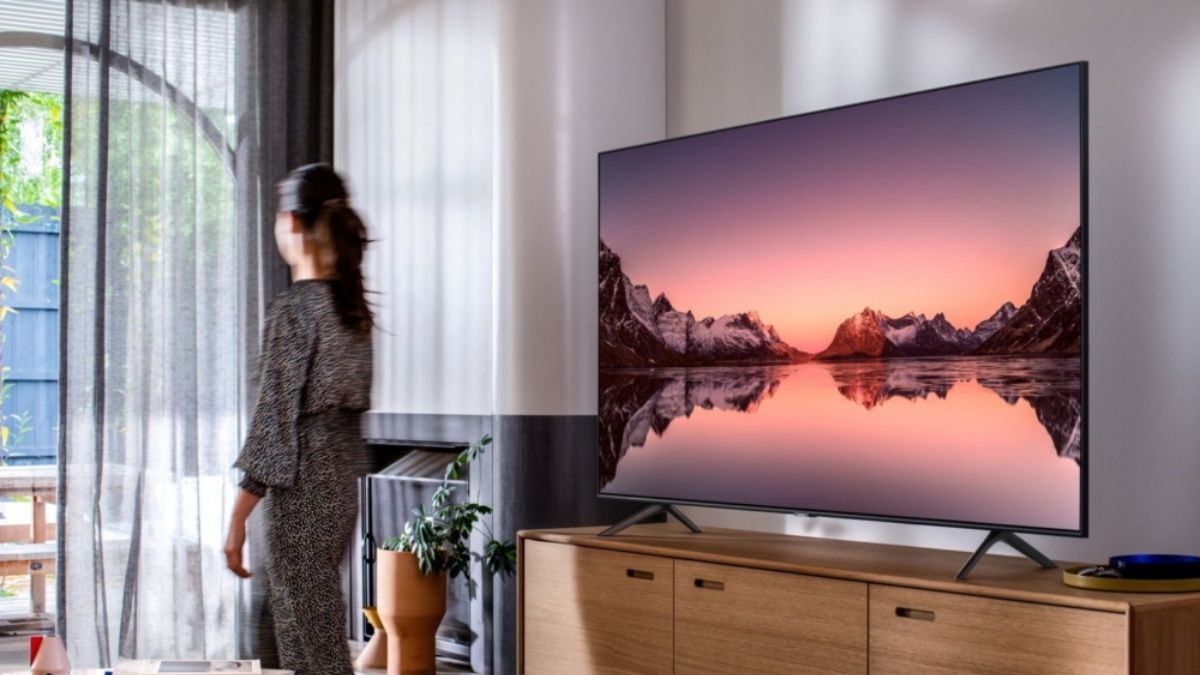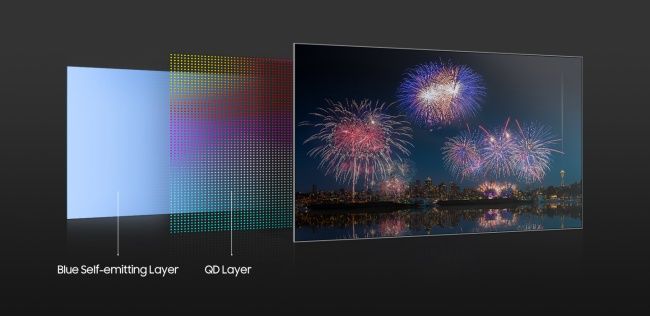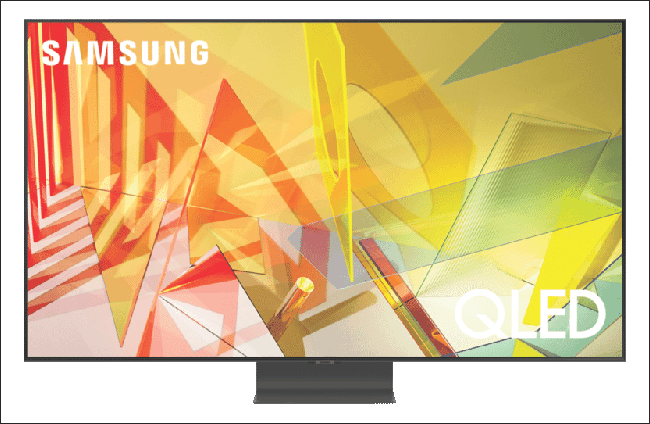Quick Links
The television market is full of different display types and features that claim to provide excellent picture quality. And now, to confuse the consumers even further, a new screen technology has arrived called QD-OLED or QD Display.
The Best of Two Worlds
As the name suggests, QD-OLED is a hybrid display technology that takes the elements of OLED and combines them with quantum dots. Samsung has developed it intending to produce a display that keeps the benefits of OLED technology while removing one of its major drawbacks.
Over the last several years, OLED TVs have successfully established themselves as the leader in picture quality by offering perfect blacks, near-infinite contrast ratio, and wide viewing angles. However, they have a relatively lower brightness than LED-backlit LCD panels. This hampers their HDR performance and can be a problem if you place your TV in a well-lit or sunny room.
To solve this problem, Samsung decided to employ the quantum dot technology, something that it already uses in its QLED and Neo QLED televisions. A layer of quantum dots in QLED TVs improves their color accuracy and helps offer a wide color gamut. But when used with OLED panels, it has an additional benefit: increased brightness.
How Does a QD-OLED Display Work?
According to Samsung Display, a QD-OLED display has three main components: a TFT layer that includes an electronic circuit to pass current through the OLED material, a layer of blue OLED material that generates blue light, and a layer of quantum dots.
When the blue light from each pixel is passed through the quantum dot layer, green and red sub-pixels are created, which, combined with the blue sub-pixel, make up the RGB color model. In this color model, red, blue, and green are added together to produce other colors for the pictures that you see on your TV.
By using quantum dots instead of a color filter for color transformation, virtually no light energy is lost. This results in a brighter display compared to the traditional OLED TV panels. And as the QD-OLED panels have self-emissive pixels, individual pixels can be dimmed to get perfect black levels. Thanks to the deep blacks and high brightness, the QD-OLED panels can provide a significantly better HDR performance than traditional OLEDs.
Samsung says the QD-OLED displays can achieve a high contrast ratio of 1,000,000:1, offer wide color gamut, and have excellent viewing angles. Additional enhancements made by the company also enable the display to better combat glare and reduce exposure to harmful blue light wavelengths.
QD-OLED vs. OLED
Although the QD-OLED displays offer some of the benefits available with OLED panels and have a somewhat similar structure, they have two key differences in how they work. First, as mentioned, the QD-OLED displays only use blue OLED material, which generates blue light. The OLED TV panels, on the other hand, have red, green, and blue OLED materials. These materials are sandwiched to create a white light, which acts as the light source for each pixel. This is why the OLED panels used in modern televisions are also called White OLEDs.
The second difference is how QD-OLED and OLED panels convert their primary light source to produce other colors. Instead of the quantum dots used in QD-OLED panels, the OLED panels use a color filter that converts white light to red, green, blue, and white colors. These are then added to make other colors. However, this color filter is not as efficient as quantum dots, and some of the light energy is lost, reducing the panel's brightness.
While these changes will help QD-OLED displays, potentially offering higher brightness, wide color gamut, and more lifelike colors, the panels will still likely be susceptible to burn-in. It is commonly associated with OLED panels, and since QD-OLED panels are also using organic material, they'll also degrade over time and may have to deal with burn-in issues.
QLED vs. QD-OLED
Quantum Dot technology is not new to the television market. It's used in the QLED or Quantum Dot LED TVs from several manufacturers, including Samsung. So you can already get a wide color gamut and excellent color fidelity in QLED TVs. But it's the OLED elements of the QD-OLED panels that truly separate these two display types.
QLED TVs are essentially LED TVs that include a layer of quantum dots. So while they may have better color reproduction than other LED TVs, they still have the same drawbacks that the other LED TVs have. For example, LED TVs can't reach the perfect black levels of OLED or QD-OLED televisions, so QLED TVs also have the same weakness.
Also, depending on whether they are using a VA-type panel or an IPS-type, the QLED TVs can have narrow to wide viewing angles. The presence of an IPS-type panel also significantly impacts the contrast ratio.
But even though QD-OLED panels will have a higher brightness than OLED panels, the QLED TVs will pip the QD-OLED televisions on the brightness front. According to a graph shared by Samsung Display, a QD-OLED or QD Display can reach up to 1000 nits peak brightness in HDR. In comparison, some QLED TVs have a peak brightness of over 1500 nits.
And finally, unlike OLED TVs, QLED TVs don't have to worry about burn-in.
Which Televisions Use a QD-OLED Display?
As of late 2021, none of the TV manufacturers have released televisions with a QD-OLED panel. But Samsung is expected to announce the first QD-OLED TVs at CES 2022. The company will likely release 55-inch and 65-inch models initially, with more sizes added later.
Apart from Samsung, Sony and TCL are also reportedly working on QD-OLED TVs but there is no word on when they might launch.




